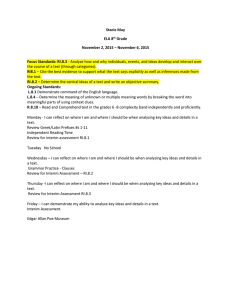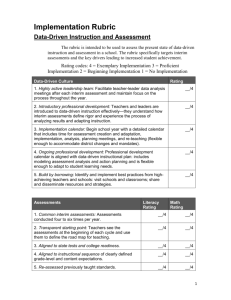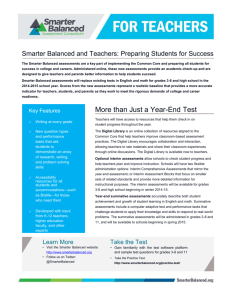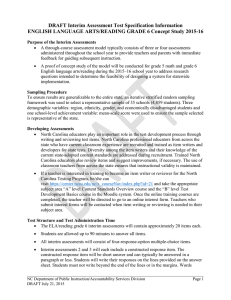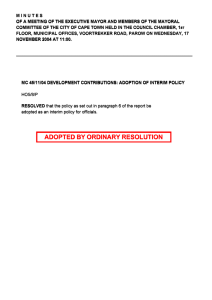Considering Interim Assessments
advertisement
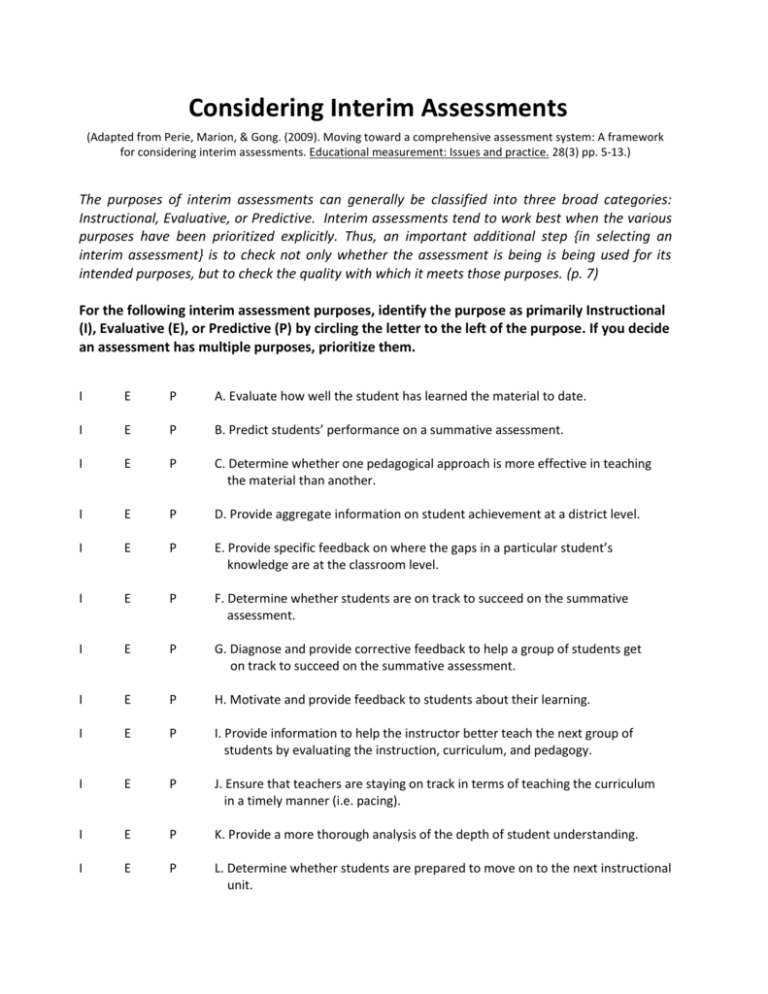
Considering Interim Assessments
(Adapted from Perie, Marion, & Gong. (2009). Moving toward a comprehensive assessment system: A framework
for considering interim assessments. Educational measurement: Issues and practice. 28(3) pp. 5-13.)
The purposes of interim assessments can generally be classified into three broad categories:
Instructional, Evaluative, or Predictive. Interim assessments tend to work best when the various
purposes have been prioritized explicitly. Thus, an important additional step {in selecting an
interim assessment} is to check not only whether the assessment is being is being used for its
intended purposes, but to check the quality with which it meets those purposes. (p. 7)
For the following interim assessment purposes, identify the purpose as primarily Instructional
(I), Evaluative (E), or Predictive (P) by circling the letter to the left of the purpose. If you decide
an assessment has multiple purposes, prioritize them.
I
E
P
A. Evaluate how well the student has learned the material to date.
I
E
P
B. Predict students’ performance on a summative assessment.
I
E
P
C. Determine whether one pedagogical approach is more effective in teaching
the material than another.
I
E
P
D. Provide aggregate information on student achievement at a district level.
I
E
P
E. Provide specific feedback on where the gaps in a particular student’s
knowledge are at the classroom level.
I
E
P
F. Determine whether students are on track to succeed on the summative
assessment.
I
E
P
G. Diagnose and provide corrective feedback to help a group of students get
on track to succeed on the summative assessment.
I
E
P
H. Motivate and provide feedback to students about their learning.
I
E
P
I. Provide information to help the instructor better teach the next group of
students by evaluating the instruction, curriculum, and pedagogy.
I
E
P
J. Ensure that teachers are staying on track in terms of teaching the curriculum
in a timely manner (i.e. pacing).
I
E
P
K. Provide a more thorough analysis of the depth of student understanding.
I
E
P
L. Determine whether students are prepared to move on to the next instructional
unit.
